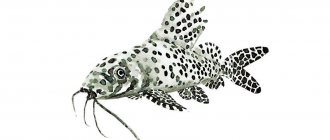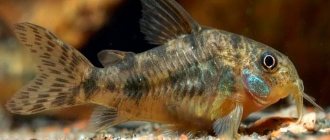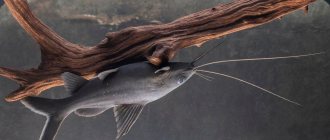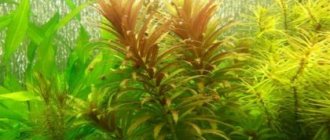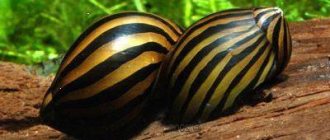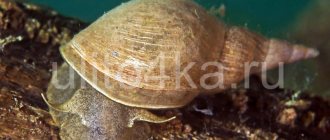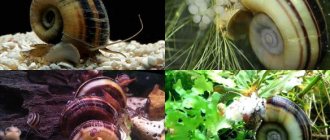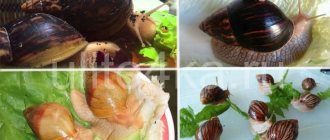SCIENTIFIC CLASSIFICATION: Kingdom: Animals; Phylum: Chordata; Class: Ray-finned fish; Order: Catfish; Family: Cirrus catfish; Genus: Synodonts; Scientific name: Synodontis (Cuvier, 1816); Also known as: Pinnate catfish;
Minimum aquarium volume: from 100 l; Temperature: 25 - 28 C; Acidity: 6.5 - 8.0 pH; Filtration is good with moderate water flow, weekly 25% water changes, good aeration; Difficulty of keeping: suitable for a beginner aquarist; Behavior: Peaceful; Maximum size: up to 26 - 30 cm; Life expectancy: up to 15 years;
Habitat of synodontis
The fish live in the reservoirs of Central, Eastern and Western Africa, in the basins of the Congo, Niger, Nile, Zambezi, Ivindo rivers, lakes Chad, Malawi, Tanganyika, Victoria, Tana, Rukwa. The genus Synodonts includes 131 species. Synodontis were brought to Europe in 1950. Today, fish come mainly from three regions: West Africa (mainly Nigeria), Zaire (“Congo”) and rift lakes.
Description of synodontis
Synodontis has a squamous body, flat below and on the sides. The fish's head is large, the lower mouth is equipped with three pairs of whiskers. There are sharp spines on the dorsal and pectoral fins, their injections are painful. The color of synodontis depends on the species and can be light yellow, brown, gray-beige and other colors. The entire body except the abdomen is covered with dark spots.
Catfish synodontis photo
In an aquarium, fish perform the function of “orderlies”. Synodontis clean the aquarium from various algal growths, and also collect organic debris that clogs the bottom. Catfish live in schools. During the day they hide in all kinds of shelters, and at night they swim in search of food. Keep this in mind when purchasing, like many catfish-like fish, synodontis prefer a crepuscular lifestyle.
We recommend our video review about catfish
Social behavior
Synodontis veilata is not aggressive, but it cannot be called peaceful either; it poses a threat to small fish, so prefer individuals of a similar size as neighbors. Trouble can also be caused to slow-moving fish; Synodontis is able to quickly eat a large amount of food at a time, thereby leaving other inhabitants of the aquarium hungry. This species has a complex hierarchy system directly related to the size of the fish - the largest individual gets the best shelter, driving others to the periphery. In addition, this is one of the few species that is an excellent addition to African cichlids.
Conditions for keeping synodontis
Catfish synodontis photo
To keep these catfish, medium-sized aquariums of 150 - 200 liters with various shelters (snags, stones, etc.) are used. Plants are mainly broad-leaved, for example Echinodorus , Cryptocoryne . Small-leaved plants and fastidious plants are not suitable, as they need intense lighting, while synodontis, on the contrary, prefer moderate lighting. Recommended lamp power is 0.5 watts per liter (~50 Lm/l).
The soil is dark. When setting up an aquarium, you should provide for aeration and filtration of water. When keeping fish, good results are achieved by regularly replacing part of the water with fresher water.
Catfish synodontis photo
Synodontis can be kept with any peaceful species of fish of similar size. Many species get along well in African cichlids with Malawians and Tangas.
Reproduction is complex and requires injections of a gonadotropin drug.
Perhaps the most important thing in keeping any aquarium pet is the quality of the environment in which it lives. The aquarium should not contain excessive concentrations of nitrogenous compounds: ammonia/ammonium, nitrite and nitrate , as well as phosphates . To do this, it is extremely important to properly set up filtration and aeration . It is important to do timely water changes. Every conscientious aquarist should always have a set of drop tests on hand, at least for nitrate and phosphate. Fortunately, they have now become inexpensive, there are no problems with their assortment and acquisition. For example, we can with a clear conscience recommend you the cool UHE drop tests, , but they are sold only online. In stores in your city - offline, you can find inexpensive Vladox tests .
Catfish synodontis photo
Besides, you all know what kind of water flows from our taps. Chlorine-containing compounds, heavy metals and other delights of the water utility do not have the best effect on the health of the fish and the aquarium as a whole. The backlog of tap water does not particularly solve this problem. Therefore, when changing water, it is advisable to use conditioners that block these harmful substances. For example, Tetra AquaSafe - we discussed this drug in detail in this article . Here we will say briefly - it blocks chlorine compounds, heavy metals + contains B vitamins, iodine, magnesium, plant extracts. Those. With it, you can safely pour water into the aquarium without fear of harming your beloved pets.
Diseases
Synodontis are hardy fish with strong immunity. However, poor care and dirty water can undermine the health of any fish.
First of all, you need to monitor the condition of the water and the amount of nitrites/nitrates. An increase in this indicator negatively affects the condition of all pets, including catfish.
It is also recommended that you carefully monitor your pet's diet and portion sizes. Otherwise, regular overeating will lead to obesity and problems with the digestive tract. If your fish are already overweight, you should switch them to plant food and cut back on portions.
What to feed synodontis
Sinonontis, like many catfish, are not picky in their gastronomic preferences. In nature, they eat everything that moves, died, or simply got into their mouth =) They eat insects, their larvae, as well as plant foods.
In aquarium conditions, you can use virtually any branded food for synodontis; if we talk about personal feeding, then Tetra Tablets TabiMin tablets for bottom fish are perfect.
It would not be amiss to note that when purchasing any dry food, you should first of all pay attention to the date of its manufacture and shelf life, try not to buy food in bulk, and also store the food in a closed state - this will help to avoid the development of pathogenic flora in it .
Compatibility
The compatibility of catfish shifters with other types of fish is high, due to their peaceful nature. On rare occasions they become aggressive. This usually happens if an individual of another species leads the same lifestyle as the catfish. Species that prefer to spend time at the bottom of the aquarium become enemies and invaders of territory in the eyes of the fish. This causes conflicts.
The best neighbors for catfish shifters will be cichlids and tetras.
View this post on Instagram
Rare sighting of my hybrid leopard synodontis catfish. This guy is so elusive that you can go months without seeing him. I raised him from a 0.5″ fry to a 7″++ adult from June 2021 to the present day. So proud of how much he has grown and how far he has made it from my previous 30G to this 70G. #hybrid #catfish #synocatfish #synodontis #leopardhybrid #spotsandscales #fish #fishtank #fishkeeping #fishkeeper #beautiful #allgrownup #proudmama #freshwateraquarium #freshwatertank #freshwaterfish #freshwater #hobby
A post shared by Joanne Peter (@littlewingedwolf) on Sep 13, 2018 at 5:33am PDT
Several fish of the same species have average compatibility. If the inhabitants are approximately equal in strength and size, then they will get along. But if one of them is weaker and smaller, then they will oppress him, bite him, and take away food. At the first signs of oppression, the individual is placed in a separate tank.
You should not keep changelings with small fish species or fry. At night they will be attacked by catfish or eaten.
CUCKOO CATFISH OR SYNODONTIS MULTISPOTTED
Synodontis species - cuckoo catfish
Habitat: Rift lakes (Lake Tanganyika); Content difficulties: easy; Water parameters in the aquarium: t0 23 - 28 C; pH 7.0–8.0; dH up to 20; Life expectancy: up to 10 years; Aquarium size: at least 80L with plenty of hiding places; Body length: up to 15cm; Behavior: peaceful; Diet: omnivorous.
One of the most famous species of synodontis. This beauty comes from Lake Tanganyika in Africa. The fish has a strong, stocky, slightly elongated and laterally flattened body. The head is formed by a lower mouth with 3 pairs of antennae and large eyes. The dorsal fin of Synodontis multispotted is triangular in shape and relatively small in size, and the fat fin is quite large. The back of the fins is colored light blue. The caudal fin is distinguished by highly developed blades, which are decorated with a black edging. Synodontis multispotted has a light yellow color with numerous black spots. Males are distinguished by brighter colors and a higher dorsal fin. It has a peaceful character, but it is not recommended to keep it with small fish. Gets along well with larger fish, African cichlids. Young individuals exhibit a gregarious nature; later they begin to show preference for their own territory. Under natural conditions, the cuckoo catfish feeds exclusively on snails. However, snails are not at all necessary in an aquarium, since the fish get used to high-quality dry food well. This type of fish received its second name because of its spawning method. Synodontis multispotted lays its eggs at the exact moment when another species of fish, such as cichlids, takes its eggs into its mouth for incubation. Catfish eggs are mixed with cichlid eggs and hatched by the other parents. Foundling fry grow together with young cichlids and sometimes feed on them.
SYNODONTIS NIGRIVENTRIS (DAVID, 1936)
Notes
The reason we recommended above using non-Tanganyika cichlid hosts is that successful aquarium spawning using Tanganyika cichlid species has never been recorded! This may be due to an evolutionary process observed in the lake, in which many cichlid species appear to have learned to avoid S. multipunctata when breeding. Since no parasitic catfish species have been found in Lake Malawi or Lake Victoria, cichlids from these lakes are ideal for stocking in spawning tanks as they have no natural instinct for the presence of S. multipunctata when breeding.
As mentioned above, it is not necessary for S. multipunctata to have its eggs incubated in the mouth of another species, as spawning has sometimes occurred in the absence of foster parents. It is likely that this also occurs under natural conditions, since the population size of this species is large, and during nest parasitism, relatively few eggs are safely preserved. A female S. multipunctata is capable of laying several hundred eggs, but studies have found that relatively few mouth-brooding cichlids carry catfish eggs. When considering the above facts, it makes sense to assume that this species can also reproduce on its own, like many other Synodontis.
CATFISH CATFISH
Type of synodontis - catfish changeling
Habitat: Zaire; Content difficulties: easy; Water parameters in the aquarium: t 24 - 27 C; pH 6.8 – 7.0; dH 10; Life expectancy: up to 10 years; Aquarium size: at least 50 l. 2-3 times more is better; Body length: males - up to 6 cm, females - up to 10 cm; Behavior: peaceful; Diet: omnivorous.
The body color of the fish is brown with small dark spots. The body is stocky, somewhat flattened on the sides. The back is more convex than the abdomen, the eyes are large, the mouth is lower with three pairs of antennae, the caudal fin is two-lobed. The dorsal fin is triangular in shape and has a powerful first ray. Large adipose fin. Individuals of this species spend a significant part of their time with their belly up. This feature gave rise to the name Synodontis nigriventris catfish-shifters. In their natural habitat, skinwalkers swim in large schools of thousands of individuals. Therefore, it is recommended to purchase at least three fish. This will allow you to observe the natural group behavior of the skinwalkers.
SYNODONTIS GAMBIENSIS GAMBIAN SYNODONTIS
Habitat: Western Africa; Content difficulties: easy; Body length: up to 30cm; Behavior: may be aggressive; Diet: omnivorous.
Fish of this variety are easy to identify by their monotonous gray color. The ventral side of the body and antennae are whitish. There are several vague dark stripes on the caudal fin.
SYNODONTIS OCELLIFER
Reproduction
There is not much information available about the breeding of Synodontis and some are disputed by scientists.
In the wild, individuals migrate to spawn during the rainy season. Therefore, some aquarists advise cooling the water a few degrees to approach spawning time.
Females lay their eggs in holes or depressions that they find in advance. The female is capable of laying about 400 eggs.
After 5 days, catfish fry hatch from the eggs. At a young age they usually swim. But after 6 weeks they become like adult fish and turn over in the water. The fry feed on brine shrimp and small worms.
How to determine gender
There are no clear distinguishing features between male and female catfish shifters. Males have a more graceful and slender body structure and are usually smaller, while females are plumper and rounder, especially in the abdominal area. In males, a small genital outgrowth is located near the anal fin. Female skinwalkers have much larger spots on their body than males.
OCULATE SYNODONTIS
Type of synodontis - ocellated
Habitat: Western Africa; Content difficulties: easy; Body length: up to 50 cm; Life expectancy: up to 20 years; Behavior: peaceful; Diet: omnivorous.
The color of this variety of synodontis is light gray, sometimes with a yellowish coating. The body is covered with large, round, black spots. In adults, a white mark may appear in the center of each dark spot. On the back of the fish there is a large fin with sharp spines, so it is not recommended to transport the fish in bags, but use glass or plastic containers for this. Beautiful appearance and ease of maintenance have become the key to the popularity of ocellated synodontis.
SYNODONTIS EUPTERUS
Adviсe
- Keep 2–5 catfish.
- Set up a couple of covers.
- Don't overfeed catfish.
- Don't put them near small fish.
- Use only smooth primer without sharp corners.
Be sure to get these changeling fish. After all, in Japan there is special respect for catfish, because according to the Japanese legend about the structure of the world, the earth is located on the back of the great catfish Namazu.
Previous
FishDetailed instructions for keeping active barbus fish
Next
FishWhy do angelfish fight among themselves?
SYNODONTIS EUPTERUSE OR VEIL
Type of synodontis - veil
Habitat: Western Africa; Content difficulties: easy; Life expectancy: more than 15 years; Body length: up to 20 cm; Behavior: peaceful; Diet: omnivorous.
The body of adult fish is gray with a yellow or purple tint and covered with small spots; in juveniles it is covered with winding stripes. The dorsal fin already looks veiled in juveniles. As the fish matures, the growth of the fins accelerates due to the lengthening of the soft rays and the membrane surrounding them. It is because of this feature that this species was nicknamed veiled synodontis (from English: Featherfin squeaker - squeaker with feather-like fins). The name comes from the Greek word "Syno", meaning "close" and "odontis", meaning "tooth" - referring to the teeth of the lower jaw of the fish, located close to each other. The second attribute in the name "Eupterus", which means "Beautiful Wings" in Greek, refers to its dorsal fin. Synodontis eupterus is a hardy fish and can adapt to a variety of conditions, making it ideal for beginner aquarists. Fish can often be observed in an upside-down position under overhanging rocks or snags.
SYNODONTIS ANGELICUS (SCHILTHUIS, 1891)
Reviews
Most aquarists and catfish breeders note their quiet and peaceful character. Fish coexist seamlessly with all types of fish. Breeders love to watch the strange and unusual antics of the aquatic pet. Because of this, catfish are so popular.
SYNODONTIS ANGEL, STELLAR SYNODONTIS
Synodontis species - angel, star-shaped
Habitat: Zaire; Content difficulties: average; Water parameters in the aquarium: t 26 - 28 C; pH 6.5 – 6.8; dH 2 - 4; Life expectancy: up to 15 years; Aquarium size: at least 150l; Body length: up to 25cm; Behavior: due to the high territoriality of adults, clashes with neighbors may occur; Diet: omnivorous.
Photos of this fish have been published in many books and magazines. The price for this type of catfish reached 200-300 dollars per piece. Currently, their number has increased, and the price has fallen. Wild representatives of stellate synodontis are black with numerous white spots. Several color variations of this species are known. Some individuals have yellow and blue spots. Instead of spots, winding stripes may appear. From time to time, fish appear in the population whose background color is brown. Synodontis angel is a quiet, peace-loving fish that is very active at night, but can leave its shelter during the day. They should not be kept with small fish, because... they may mistake them for food. Star catfish love to burrow in the ground, so it is necessary to use a fine-grained substrate. Vegetation must have a strong root system.
SYNODONTIS CONTRACTUS (VINCIGUERRA, 1928)
Feeding rules
Synodontis eat any food. True, their food preferences change significantly during the day. In the first half of the day they display all the habits of predators. At this time, it is better to feed them live and dry food containing a large amount of protein. Catfish do not refuse pieces of shrimp and sprat meat. But you shouldn’t feed them such a delicacy often, otherwise they will become pure predators and begin to destroy other inhabitants of the aquarium.
Males are always slimmer and smaller than females.
To dull the hunter's instincts, synodontis need to be regularly fed with vegetarian food. The afternoon is the best time for this. Crushed dandelion leaves, cucumbers, parts of zucchini and spinach can be used as plant food. Fish also happily eat oatmeal scalded with boiling water.
Catfish are prone to obesity, so you should never overfeed them. From time to time it is recommended to arrange fasting days: do not feed your pets at all. They will not die of hunger, but this approach serves as a good disease prevention.
SYNODONTIS CONTRAST
Habitat: Zaire; Content difficulties: easy; Water parameters in the aquarium: t 22 - 28 C; pH 6.5 – 7.0; dH 3 - 12; Life expectancy: up to 15 years; Body length: up to 10 cm; Behavior: peaceful; Diet: omnivorous.
One of the smallest representatives of synodontis. It is similar in appearance to the shapeshifter Synodontis nigriventris. Individuals are beige-gray with dark coffee spots alternating with light dots. The first ray of the dorsal and pectoral fins and tail are streaked with brown. Mouth with a noticeably convex sucker. Calm, peaceful fish, love the movement of water, during the day they often stay in shelters and are most active at dusk. At night they dig in the ground and can dig up plants. They do not like bright light and need shelter. As with Synodontis nigriventris, these catfish are upside down most of the time and swim in schools. In nature, Synodontis contractus is an active algae eater, as a result of which the diet must contain plant components.
SYNODONTIS DECORUS (BOULENGER, 1899)
SYNODONTIS FLAG
Synodontis species - flag
Habitat: Zaire; Content difficulties: easy; Water parameters in the aquarium: t 23 - 28 C; pH 6.5 – 7.5; dH up to 20; Life expectancy: up to 15 years; Aquarium size: at least 100 liters with plenty of hiding places; Body length: up to 30cm; Behavior: peaceful; Diet: omnivorous.
Synodontis flagalis is one of the most beautiful representatives of the genus of synodonts. This catfish moves gracefully, wagging its long black dorsal fin. The young specimens (5-6 cm) coming for sale are very beautiful, but this is only a hint of their future beauty, which blossoms as they grow older. Flag synodontis has a stocky, elongated and slightly laterally compressed body. There are spines on the dorsal and lateral fins. Big eyes. Lower mouth with 3 pairs of whiskers. The adipose fin is large. Okra - large black spots scattered on a light background with a silver tint. The back is brownish. The abdomen is light. The head of Synodontis is dotted with small black specks. The main decoration of the fish is the thread-like elongated first ray of the dorsal fin (with age, a braid appears on it) and a neat lyre of the tail. Sexual differences: the male is brighter, slimmer and smaller than the female. Flag synodontis is a very calm, peaceful and schooling fish. It should not be kept in the same aquarium with small fish, as well as with fish that have an open wound on their body (synodontis can eat away this place). Flag synodontis must be kept away from fish that love to feast on other people's fins. The long extension of the dorsal fin is a primary target not only for cichlids.
SYNODONTIS NOTATUS (VAILLANT, 1893)
ONE-SPOTTED OR BLUE SYNODONTIS
Type of synodontis - gray
Habitat: Zaire; Content difficulties: easy; Water parameters in the aquarium: t 22 - 25 C; pH 6.5 – 7.5; dH 8 - 18; Life expectancy: up to 15 years; Aquarium size: at least 150L with plenty of hiding places; Body length: up to 25 cm; Behavior: may be aggressive; Diet: omnivorous.
Gray or single-spotted synodontis has a very attractive appearance. Its body and head are gray-brown in color, and its abdomen is white. There are from one to five round, black spots along the body along the midline. The number of spots on each side of the body may not be the same. There are individuals with spots on only one side or absent altogether. Young single-spotted synodontis are quite sociable and peaceful, but with age, aggression and territorial behavior appears both towards their own species and towards other synodontis. Best kept with large fish, such as West African cichlids.
SYNODONTIS NJASSAE (KEILHACK, 1908)
Breeding
Reproduction of all Synodontis species in captivity is almost impossible without hormonal therapy.
The exception is the Cuckoo Catfish, but this also has its own nuances.
For spawning it is necessary to use a separate tank with good soil, a pair of healthy individuals of the opposite sex and plenty of food. At the end of spawning, the parents are separated from the children.
It is necessary to ensure proximity to spawning cichlids. As soon as the latter have laid eggs, the catfish throw their clutch at them, and in the future the predators keep an eye on the offspring of Synodontis.
